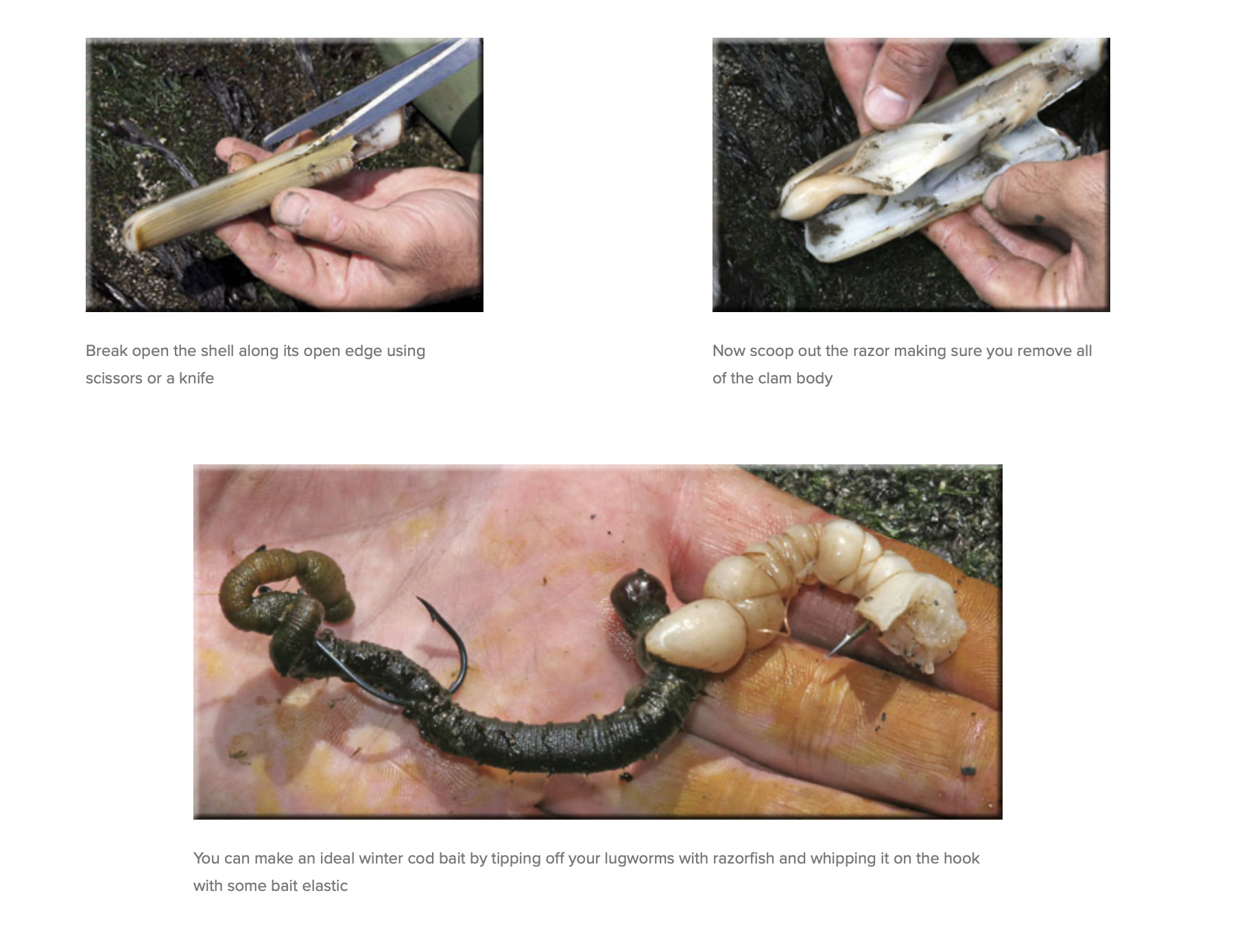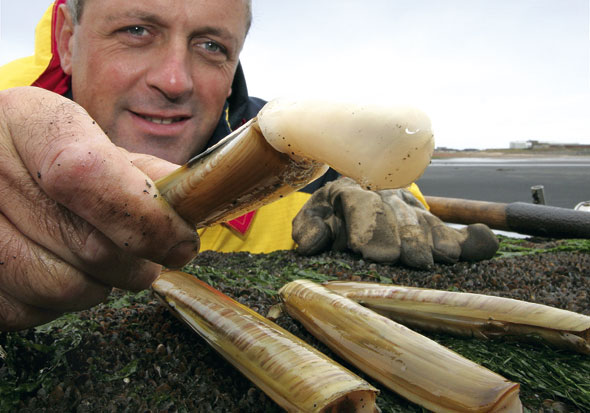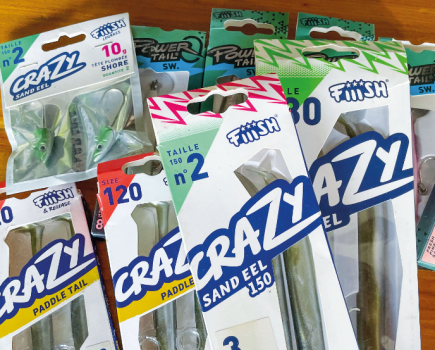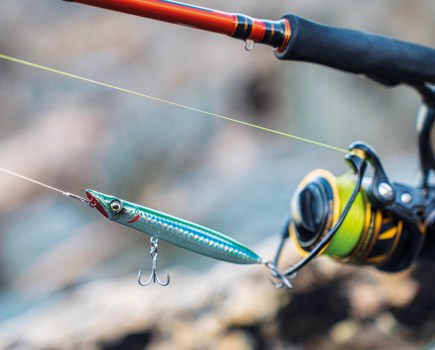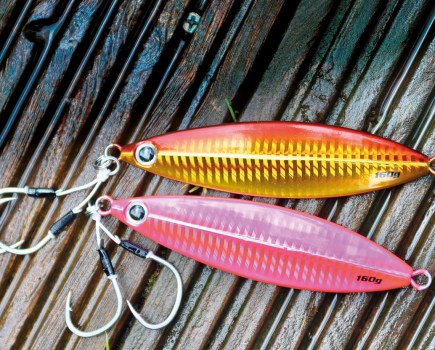Steve Walker believes that razorfish, also called razorclam or razorshell, is a vastly underrated bait, especially for winter cod. He collects them in late summer and uses them in a cocktail or as a bulk bait. Here he shows how to collect razors and present them to the best effect.
Maybe they should have called the razorclam or razorshell the cutthroat clam, because the shape and rough size is much the same at the old wet shave cutthroat razor.
The two halves of the fragile shell, often called the valves, are curved with their colour ranging from a soft cream to a dark brown purple. You may not know this but here are several species and they can be identified by their shape, size and colour.
Some have a straight shell, some have a curved shell and others are only curved on one side. They are very slow growing and a 20cm long specimen may be 25 years old.
However, they probably all look the same to the sea angler. The ones that I collect are a light creamy colour with a straight shell and I have no idea what species they are.
There are several commercial razor fisheries, mainly on the west coast of Scotland, parts of Wales and around The Wash where they are often collected by suction dredger. In the Clyde divers collect them commercially.
Razor is becoming popular as a food source. They are exported to Europe and the Far East where they are considered a delicacy. There is currently a lot of research taking place on the west coast of Scotland to see if the razorclam industry is sustainable.
The Department for the Environment, Food, and Rural Affairs (DEFRA), recommend a minimum size of 10cm, so if you are collecting your own supply make sure they bigger than this limit.
On the west coast of the United States gathering razor in season is a major social event and highly regulated with collectors often using ‘clam guns’ to lift the shell. I wonder if anyone tried collecting them using a bait pump in this country?
Razors are filter feeders and live along the lower shoreline with the main concentrations often extending well out to sea beyond the reach of anglers. They are filter feeders staying buried in the sand with only a siphon protruding from their burrow.
If a predator grips the siphon it will break at a weak spot and then regenerate. They are also known to be good swimmers so colonies must be able to move around, particularly when they are washed out during heavy seas.
They are sensitive to light and vibration and can burrow to great depths very quickly, often quicker than you can dig for them, especially if they are living in wet sand.
The thick muscular foot can propel a specimen through the sand at up to one inch a second and when they are in their burrows they can move considerably faster than that.
How to locate your razorfish
Razorsare difficult to find and the only sign that they are in a particular area is the empty shells washed up along the shoreline. They can be located by either looking for very shallow dimples on the surface, often a small round or keyhole shaped hole.
One trick is to walk slowly along the beach putting pressure on the surface where you think a razor might be. If a razor is in residence then you may see a plume of water ejected from the hole.
I dig close to the shallow dimples in the sand. Several years ago there were hardly any razors in my area but now they are widespread. Local water quality has certainly improved so perhaps they prefer cleaner unpolluted water.
They are relatively easy to dig and the biggest ones are usually around 20cm long, with the vast majority around 10cm to 15cm.
I use the same technique as if I were lifting black lugworms, in other words by pushing my spade into the sand alongside the hole.
I then dig away the top surface of the hole, revealing the burrow to see in which direction it goes and follow this down until the clam is exposed. I use a long trenching spade and have to dig very quickly to get the bigger clams, which may be down quite deep.
Once the top of the razor is sufficiently exposed, I quickly grab hold of it and carefully pull it out. The amount of suction that the razor’s foot can exert while burrowing is considerable and often a tug of war follows, but with consistent pressure you will find the razor can eventually be extracted.
I have tried pouring a thick saline solution down the hole and this does work with the razor ejecting spouts of water as it eventually nears the surface, but I can dig them out much quicker. The salt method may be better for those very big specimens that are too deep to dig or for anglers who are unable to dig quickly for prolonged periods.
There is also a much older method of collecting them by using a spear-shaped implement that has an end a bit like an arrowhead. The sharp end is thrust down the hole into the clam and is then twisted and extracted with the clam on the end. I have never used this method or heard of anyone who has.
Tackle shops usually have a frozen supply of blast frozen and vacuum -sealed packs, and fresh ones if you’re lucky, but they are relatively expensive to buy. My local wet fish shop sells 30cm long ones for the table, but they cost a £1 each.
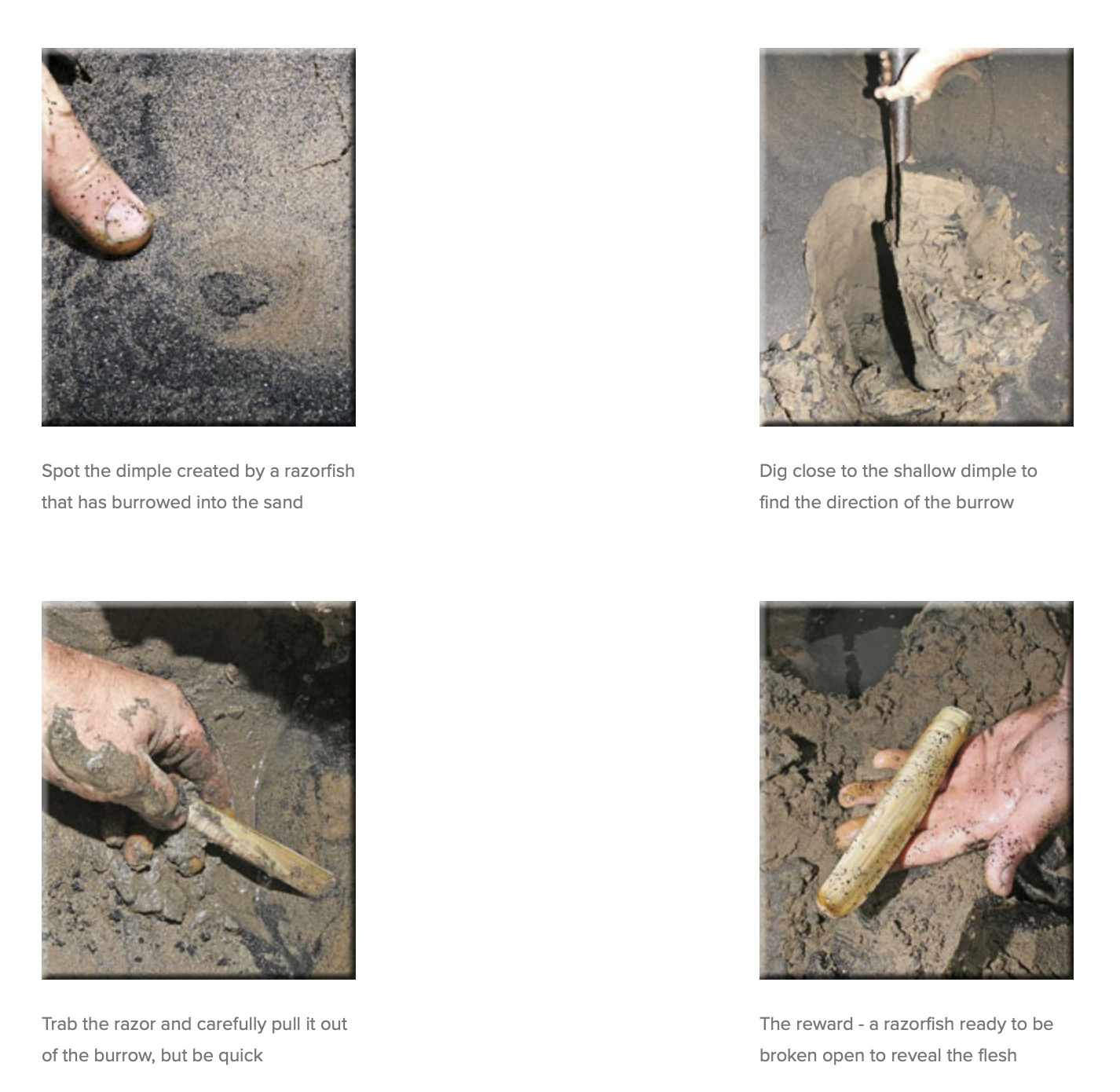
How to prepare your bait and freeze it for later use
Razor is an underrated bait in my opinion because I know they are a great bait for many species from the humble dab to cod and bass.
One or two whole ones will make a big cod and bass bait, and smaller portions or strips cut from the siphon part will make an equally effective bait for flatties, pouting and whiting.
They make an excellent cocktail and I very rarely use them by themselves. For me they make an ideal winter cod bait, when tipping off a big lug bait with a bit of razor will often out-fish anything else. A razor and frozen crab bait is also a very effective winter cod offering in my area.
They are easy to use and clean. Just break open the shell along its open edge – you may need to use a knife – and then scoop out the razor making sure you remove all of the clam body.
They are always full of flesh unlike other shellfish, such as mussels, which you may notice are often a watery mess. A big razorfish will slice down into four or five tipping baits.
Razor are easy to freeze and will last a long time in the freezer. Give them a quick rinse in warm water to clean off any dirt and dry them out on some tissue paper or hand towel.
Lightly wrap them up in cling film in their shell, place on a metal tray in the freezer and once frozen wrap them up in a sealable sandwich bag.
I get a large supply during the big low tides of August and September and always have enough for fishing through the winter.
Depending on the conditions and what I expect to catch I will take sufficient amount with me to last a session. If I don’t use them I give them away, and I never refreeze frozen bait.
If you want to maximise their use then shell them before cleaning, freeze them in the same way, and then they should be small enough to place inside a wide-mouthed flask so you can bring back any you don’t use.
They don’t seem to survive very long once collected and at best they keep for a day, although this doesn’t bother me because I freeze them down on the day I gather them to see me through the winter.
How to fish razor
Razor needs to be tied on the hook with elastic cotton. I use a Pennell rig with Aberdeen or Viking hooks for cod, threading a section of clam up the hook after some worms or a crab have been loaded on.
Sometimes the bait doesn’t look big enough, so to avoid the clam sliding down the hook shank I finish off with another worm or small piece of squid tentacle, cocooning it all in cotton so it looks like a sausage.
If you are sceptical then make up a bait without tying it on, cast it out, retrieve and see the mess.
When using several hooks for flatties or whiting I ensure that the bait is secured to the hook with elastic cotton. The Aberdeen hook with barbs on the shank, helps to keep the bait in place.
